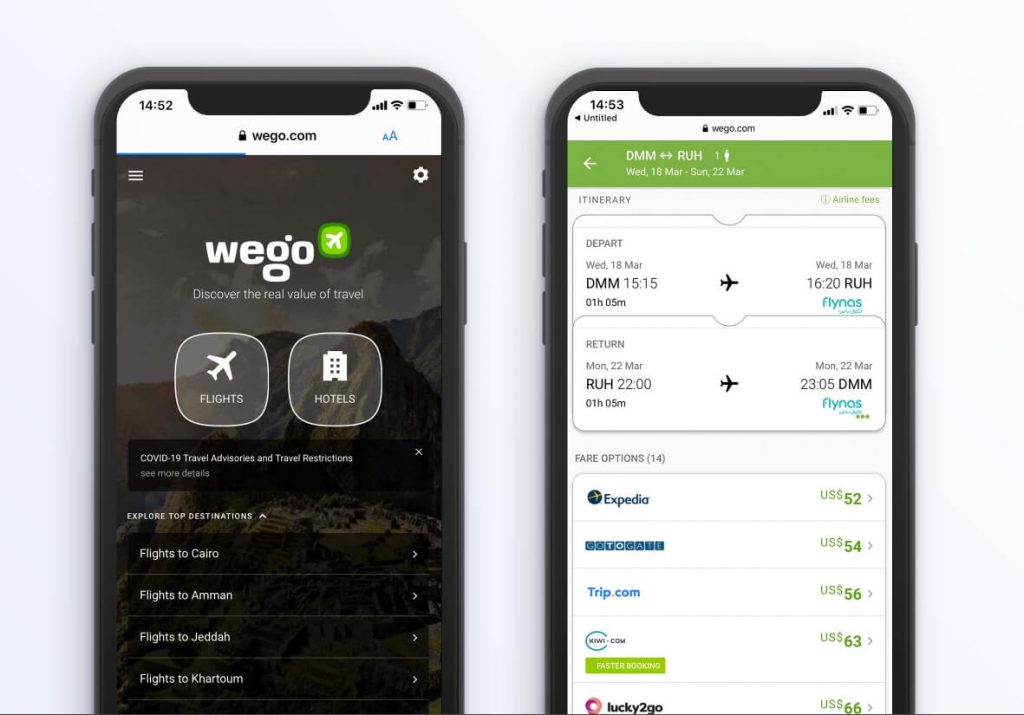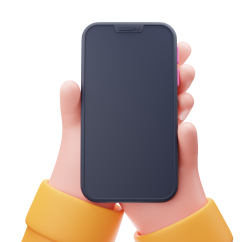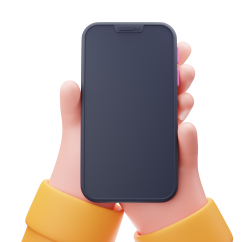
Got a Project? Tell us about it!
We are a leading custom software development agency focused on web, mobile app development & SaaS application development & MVP Development.
Progressive Web App Design: 20 Tips for a Great PWA UX and UI Design
- Mobile app development
Our experienced team of UX/UI designers and developers will help you stand out with a beautifully designed UX/UI.
Progressive Web App Design: 20 Tips for a Great PWA UX and UI Design
 Progressive Web Applications are no longer just a buzzword. This technology outperformed native apps and demonstrated its value to the business. As a result, Progressive Web App design has become a hot topic for businesses looking to differentiate themselves from the competition with a powerful PWA solution. When it comes to PWA UX design, the process is similar to that of creating native apps. It does, however, have differences and peculiarities.
You've probably heard a lot about Progressive Web Apps (PWAs) and the various benefits they provide. PWAs technology aims to provide a high level of performance regardless of the device on which it is used. In terms of effectiveness for businesses, progressive web app designs have undoubtedly surpassed native apps in recent years. It is no secret that performance is critical to a company's success and profitability. Progressive web apps have enabled businesses to create more rich experiences on the mobile web in recent years.
As a result, more businesses are anticipating PWA development with robust PWA UX designs to compete. We've compiled the most effective PWA app design guidelines in this article to assist you in creating the best user experience for your product.
Progressive Web Applications are no longer just a buzzword. This technology outperformed native apps and demonstrated its value to the business. As a result, Progressive Web App design has become a hot topic for businesses looking to differentiate themselves from the competition with a powerful PWA solution. When it comes to PWA UX design, the process is similar to that of creating native apps. It does, however, have differences and peculiarities.
You've probably heard a lot about Progressive Web Apps (PWAs) and the various benefits they provide. PWAs technology aims to provide a high level of performance regardless of the device on which it is used. In terms of effectiveness for businesses, progressive web app designs have undoubtedly surpassed native apps in recent years. It is no secret that performance is critical to a company's success and profitability. Progressive web apps have enabled businesses to create more rich experiences on the mobile web in recent years.
As a result, more businesses are anticipating PWA development with robust PWA UX designs to compete. We've compiled the most effective PWA app design guidelines in this article to assist you in creating the best user experience for your product.
What are PWAs and why should you care?
 A PWA is an abbreviation for a Progressive Web App. PWAs, as the name implies, is built on standard web technologies. Simultaneously, the addition of the most recent JavaScript features makes them an excellent substitute for native apps. In other words, Progressive Web Applications function both like regular websites and mobile apps, and provide functionality such as offline mode, push notifications, and adding to the home screen that was previously only available in native applications. So, in essence, a PWA is a low-cost cross-platform alternative to a native app.
The following are the primary advantages of Progressive Web Applications: Increased security; improved engagement; higher conversion rate; Cost-effectiveness; improved search ranking; and stable performance on erratic networks. In terms of specific examples, e-commerce businesses that have already invested in PWA development have come out on top. The implementation of technology resulted in fantastic results for marketplaces. Jumia, for example, saw a 33% increase in conversion rate after converting its website to a fast and engaging PWA.
Progressive Web Applications are more than just a hot web app user interface design trend because of these significant advantages.
A PWA is an abbreviation for a Progressive Web App. PWAs, as the name implies, is built on standard web technologies. Simultaneously, the addition of the most recent JavaScript features makes them an excellent substitute for native apps. In other words, Progressive Web Applications function both like regular websites and mobile apps, and provide functionality such as offline mode, push notifications, and adding to the home screen that was previously only available in native applications. So, in essence, a PWA is a low-cost cross-platform alternative to a native app.
The following are the primary advantages of Progressive Web Applications: Increased security; improved engagement; higher conversion rate; Cost-effectiveness; improved search ranking; and stable performance on erratic networks. In terms of specific examples, e-commerce businesses that have already invested in PWA development have come out on top. The implementation of technology resulted in fantastic results for marketplaces. Jumia, for example, saw a 33% increase in conversion rate after converting its website to a fast and engaging PWA.
Progressive Web Applications are more than just a hot web app user interface design trend because of these significant advantages.
Our experienced team will help you stand out with a bespoke, flexible, and scalable software application for your business.
Tip #1. Focus on Progressive Web App designs with both Desktop and Mobile Compatibility
Due to the fact that Progressive Web Applications are suitable for cross-platforms, they need to have excellent UI and UX for both mobile and desktop devices. However, the version for smartphone users should remain your top priority. Let's look at two Twitter Lite PWA UX design examples for desktop and mobile.PWA for desktop
For a desktop PWA UX design, you can add some spacers (optional), extend the grid, and graphical elements such as photos or illustrations. Twitter Lite progressive web app for desktop is extensive and has a variety of features:
PWA for mobile
When it comes to a mobile version, the most important and popular content should be defined first. Keep in mind that visitors to your progressive mobile website typically use many key features. For example, they might want to pay a bill and get a receipt, or they might want to look for a hotel room and book the best option. With this in mind, add the most important functionality to the navigation bar. Users will always have the most commonly used functions at their fingertips this way. Remove any sections or details that end-users could live without. The Progressive Web design of Twitter Lite for mobile is shown below:
Tip #2. Remove the footer
Every page has the same information in the footer. It is a common location for a copyright notice, terms and conditions of use, links to social media accounts, and newsletter signup. This page element can take up a lot of space at times. While this is not an issue for large desktop screens, it is an issue for mobile device screens. Given this, it is not surprising that native apps lack a footer. It implies that progressive web applications should follow in their footsteps. It is advisable to define the most important navigation items and design a navigation bar. Below, you can see how AliExpress successfully implemented this strategy. The buttons are the right size and have a good thumb zone range. If you have extra information that does not fit in the navigation bar, you can add it to the menu. As a result, users can quickly access the most important pages or actions:
Tip #3: Keep track of the list's exact scroll position.
Assuming a user is browsing a list of articles or products. They click on a specific item to learn more about it. The user wishes to return to the list after completing the item details. Your primary goal is to return them to the exact scroll position they were in. Users will be irritated if they are redirected to the top of the list otherwise. As a result, the “Back” functionality becomes an essential component of PWA UX design.Tip #4. Demonstrate interaction
Users must be able to see that their tap was recognized when they tap a button, link, or menu section. You can use a different colour to highlight the selected area for this purpose. Simultaneously, when implementing touch feedback as part of progressive web app design, ensure that it does not trigger by accident when users only touch an element to scroll on the page. Wego's PWA perfectly demonstrates proper interaction:
Tip #5: Make sure the page loads quickly.
Remember the rule of thumb: all image tags on your website should include the image's dimensions. Even if the image has not yet loaded, a browser will be able to properly layout the screen in this case. Otherwise, when the visuals are downloaded, the content will jump. Such jumps will have a negative impact on the user experience. To avoid this blunder, display a placeholder where the image should be displayed. It could be a grey square or a hazy thumbnail. Let's take a look at how Jumia handled the image loading issue:
Tip #6: Include personalized splash screens.
Before an application loads, a splash screen (also known as a boot screen or launch screen) appears for 2-3 seconds. It enhances the resemblance of your PWA website to a native app. To increase brand visibility, businesses frequently display their logo, company name, or motto on a splash screen. Furthermore, this method makes users' interactions with Progressive Web Apps more engaging. The following pointers will assist you in strengthening your brand with an eye-catching splash screen design:- Adjust the image to fit the screen.
- Keep users up to date
- Consider a simple but not boring design.
Our experienced team of android developers will help you stand out with a efficient and fast mobile app for your business.
Tip #7: Design an eye-catching home screen logo.
Users will save your progressive web app to their Home Screen, where it will coexist with other apps. As a result, your task is to ensure that it stands out from the crowd. How can you do this? The solution is to design a distinct and eye-catching icon. The following example will demonstrate why this is critical. Take a look at the three PWAs from left to right. The Washington Post, Mobirevo, and The New Yorker are examples. You will undoubtedly agree that Mobirevo and The New Yorker icons pique your interest. At the same time, the Washington Post icon, which is simply a black square, appears dull and uninteresting.Tip #8: (Keep It Simple, Stupid)
“The ultimate sophistication is simplicity.” The above quote by Leonardo Da Vinci applies to a wide range of topics, from Apple products to PWAs. To put things in perspective, a mobile screen is approximately 3–5 diagonal inches in size, whereas a desktop screen is approximately 20–30 inches in size. Also, keep in mind that a mobile phone has significantly less processing power than a desktop computer. Furthermore, apps typically use far less content than a mobile web page, giving you even less to work with. So, when it comes to impressing the user with an intricate layout and complex progressive website design, temper your enthusiasm. Nobody cares how much fancy artwork you can cram into their tiny mobile screen. Remember that your ultimate goal is to serve the customer, not to make them fall in love with your web application design. Consider removing an element from your PWA if it has lower engagement than others.Tip #9. Ensure easy navigation
A PWA is expected to behave more like a mobile app in terms of UX and more like a website in terms of technology. Take the same approach to develop the PWA that you would to developing a native app. A good starting point would be to completely avoid web-based interaction elements like footers. When a PWA is running in full-screen mode, there are no browser functionalities to assist the user. To overcome these obstacles, it is best you adopt a simple navigation bar in your app, preferably one that is small so it doesn't take up a lot of screen space. Touch gestures should be used sparingly because they are difficult to code and, from a UX standpoint, are not worth the effort. Keep some sort of navigation element at the bottom of the screen as a general rule. Again, refer back to the first point we made about keeping things simple.Tip #10. Make use of simple fonts
As mentioned in tip #9, it is always preferable to use simple fonts with PWAs to help reduce load time. As explained in this article, fonts are notorious for slowing down your website. As a general rule, use the device's default fonts whenever possible. Use only the fonts you truly require and avoid loading any font-weights you are not using. Limit the number of font files to a maximum of three (including different weights). Stacking all of the fonts that a modern platform uses, as well as tweaking the app's typography to be consistent with the user's operating system, will help your PWA load faster. Users of your PWA can easily transition between your PWA and your app since they are already accustomed to both of the fonts. On Android, the default font is Roboto, and on iOS, it is San Francisco. Medium is using this technique to populate its user interface with device fonts. Custom fonts should be avoided because they create distractions and slow down the performance of your PWA.Our experienced team of Flutter and React-native developers will help you stand out with an efficient and fast mobile app for your business.
Tip #11. Cross-browser compatibility
One of the primary benefits of a PWA is the ability to enhance and polyfill a variety of features when the browser does not natively support them. The term "Progressive" in PWAs denotes that the app works well in all browsers and that the user is presented with an enhanced behaviour whenever their browser is updated. When designing a web app, it is critical to consider each browser's ability to support PWA features. While most browsers, including Google Chrome and Mozilla Firefox, support almost all of the PWA's features, Safari does not support a few key PWA features, such as Web push notifications. The word "progressive" in progressive web applications implies that cross-browser testing is required when designing a progressive web app to ensure compatibility with PWA features.Tip #12: Remove Scrolling Glitches
Too much scrolling, from the perspective of the user, is not a good idea. Instead of a scrolling glitch or an infinite feed, use a virtualized list. Twitter's PWA, Twitter Lite, implemented a virtualized list component that only renders the content visible within the viewport. It also renders items incrementally over multiple frames using the request Animation Frame API. As a result, scroll positions are preserved across multiple screens. Even the use of skeleton screens can help to provide a more seamless user experience.Tip #13: Strive for Ease of Navigation
Progressive web applications are treated as a mobile app from the standpoint of the user and as a website from the standpoint of technology. Focus on developing your PWA as you would a native app. Aside from removing the footer, you can add a small navigation bar that takes up little space. Touch gestures should be avoided because they are difficult to code from a user experience standpoint. A complex progressive web app design that disrupts the user's experience should be avoided as a general rule.Tip #14: Make use of Google APIs
Many things that were previously only available for native apps are now possible thanks to the new web standards. Google has made a significant contribution to this by releasing 251 APIs for creating extremely rich web experiences. The major APIs that can be used are as follows:- Credential management API
- Payment request API
- Service workers
Tip #15: Design for offline users
Some of your users will undoubtedly lose their internet connection while using your app. Check that the site can be accessed even if the internet is unavailable. PWAs have a long way to go before they can compete with Facebook's native app, which allows you to access your feed even when you're not connected to the internet, but the technology could be available in the near future.Tip #16: Offer a seamless experience
Most users expect a consistent experience, and it's something they would appreciate from your web design. Many users believe that apps work "just because," and they will most likely have the same attitude toward your web app.Tip #17: Increased Performance and Speed
Although PWAs are built and enhanced with modern APIs to provide a native-like experience, it is critical to consider increased speed and performance for PWAs from the web application design phase. You can accomplish this and provide a better user experience by optimizing the information displayed on the pages, aiming for less than two seconds of loading time, and more.Tip #18: Smooth Page Loading
You can't provide rich, reactive web experiences unless you work on your PWA's page loading speed. As a result, it's critical to follow Google's advice and use the PRPL pattern when designing your PWA, which includes pushing critical resources, rendering the initial route, pre-caching routes, and lazy-loading the remaining parts.Tip #19: Make it Content-Responsive.
To provide a native-like responsive experience, PWA must learn how to make content responsive and provide the best possible UX. You can accomplish this by using placeholders while content loads to prepare users for what is to come and to reduce the effect of jumping images. It usually appears when the size is not set correctly. By including widgets, you can also make your content easier to find and share on social media or directly with friends. You can accomplish this by allowing users to share content with a single click.Tip #20: Make Everything About the User
Progressive web apps are designed to make it easier for users to achieve their objectives. Using fewer elements in your web app and developing your PWA with a ‘less is more' mindset will simplify the process and make it more user-friendly. Intricate designs and layouts can draw users to your progressive website design, keep it functional, and help it serve its intended purpose.Conclusion
PWAs are the way of the future because they help to improve the user experience while providing an app-like experience. Remember that users of your PWA should be able to find the information they need in the shortest amount of time. Reducing the number of clickable buttons and reducing the amount of text will help tip the scales in your favour. We believe that by implementing our best progressive web app design principles, you will be able to take your PWA to a new level. Progressive Web Apps are in high demand because they enable developers to provide users with an intuitive web experience on their phones. You can easily provide great app-like interfaces and experiences to your users while they use your PWA by simply implementing these recommendations. When everything is done correctly, your customers will have an exceptional and smooth user experience. In turn, happy customers will reward you with higher conversions and engagement. Mobirevo is here to help you with all of your PWA-related questions and needs. We also offer a complete and cost-effective solution for online merchants looking for an all-around perfect Magento PWA solution for your eCommerce website. Contact us if you already have an idea for a PWA. Our team has extensive experience in PWA development and will gladly assist you in growing your business with this cutting-edge technology. Do You Need Assistance Creating a Great UX for Your PWA? You can contact us today to get a free quote. Our team at Mobirevo strive to provide unrivalled services to all of our valued clients. You can also check out our case study page to see our client's portfolio and get a better understanding of the quality of products we deliver. Also, contact us if you have any questions about our services, and we will get back to you as soon as possible. Want to receive more content like this? You can signup for our newsletter, which features curated opinions, and product discovery tools for building remarkable digital assets. Go ahead and subscribe to our weekly newsletter and you will be the first to know when we publish awesome content like this. Also, you can check other content crafted with love by our amazing team on our blog.Got a Project? Tell us about it!
We are a leading custom software development agency focused on web, mobile app development & SaaS application development & MVP Development.
Subscribe to Our Newsletter
Join over 5,000 enterpreneurs and businesses who already have a head start.
Got a Project? Tell us about it!
Our Engagement Models
OUR PRESENCE
BLOCKCHAIN
OTHER SERVICES WE OFFER
CONTACT
Copyright © 2022 Mobirevo Software & Technologies LTD a company duly registered with CAC with RC Number: 1756190. All rights reserved.

Got a Project? Tell us about it!
We are a leading custom software development agency focused on web, mobile app development & SaaS application development & MVP Development.





